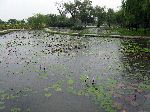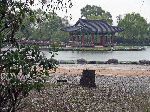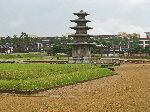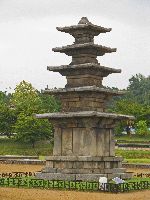Ibike Korea People-to-People Program
 Photo essay: Geum River
Trail -
Photo essay: Geum River
Trail -
Gunsan, Ganggyeong, Buyeo, Gongju, Sejong, Daejeon
Geum River Trail (200km, 120mi) Mostly riverside and dike-top trail, with the occasional
headland.
Points of Interest: Gunsan, Ganggyeong, Buyeo, Gongju, Sejong, Daejeon,
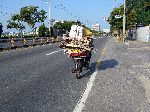
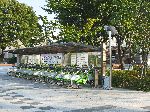
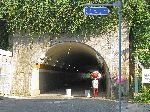 Gunsan
improves as you distance yourself from the industrial area and near the banks of
the Geumgang (river). Bicyclists are a bit more prevalent, include some working
bikes with big loads. To avoid the major roads you can sneak into the downtown
through the Haemangul Tunnel (right). And if bike share programs reflect
local values, Gunsan gets a thumbs up for the Gunsan Bike Share Program (far
right).
Gunsan
improves as you distance yourself from the industrial area and near the banks of
the Geumgang (river). Bicyclists are a bit more prevalent, include some working
bikes with big loads. To avoid the major roads you can sneak into the downtown
through the Haemangul Tunnel (right). And if bike share programs reflect
local values, Gunsan gets a thumbs up for the Gunsan Bike Share Program (far
right).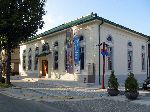
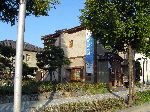 After
the Gunsan port was turned into an international trading center in 1899, the
city turned into a key shipping terminal for the export of Korean rice to Japan.
In turn, a number of Japanese settled in the area and built buildings not
typical of the community. To this day notable Japanese and Europe influenced
bank-type buildings, a residential / commercial district and a Buddhist Temple
with distinctive architecture, remain from this era.
After
the Gunsan port was turned into an international trading center in 1899, the
city turned into a key shipping terminal for the export of Korean rice to Japan.
In turn, a number of Japanese settled in the area and built buildings not
typical of the community. To this day notable Japanese and Europe influenced
bank-type buildings, a residential / commercial district and a Buddhist Temple
with distinctive architecture, remain from this era.
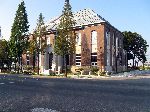
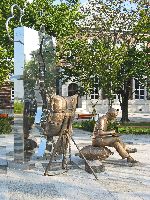 The
old Chosun Bank, Gunsan Branch (left), was built in 1923, during the
Japanese occupation. It
was originally a branch of Hanguk eunhaeng, central bank of Daehan Imperial, but
the Japanese changed the name to what it is remembered by today.
During the colonial rule the bank served as a direct financial arm of the
Japanese Governor-General of Korea. This building was designed by Germans,
who had been held as hostages by the Japanese during World War I, and
was constructed by the Chinese.
The
old Chosun Bank, Gunsan Branch (left), was built in 1923, during the
Japanese occupation. It
was originally a branch of Hanguk eunhaeng, central bank of Daehan Imperial, but
the Japanese changed the name to what it is remembered by today.
During the colonial rule the bank served as a direct financial arm of the
Japanese Governor-General of Korea. This building was designed by Germans,
who had been held as hostages by the Japanese during World War I, and
was constructed by the Chinese.
The near by sculpture is a boy who is taking a break from work to study.
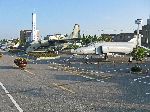
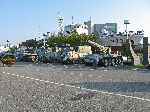 Along
the riverfront, the Jinpo
Marine Park displays retired military equipment of the
Korea armed forces including army vehicles, naval vessels and aircraft.
Along
the riverfront, the Jinpo
Marine Park displays retired military equipment of the
Korea armed forces including army vehicles, naval vessels and aircraft.This is to commemorate the Battle of Jinpo. During the Goryeo Dynasty, August 1380, a large private fleet consisting of around 500 ships attached Jinpo and pillaged the surrounding area. According to Goryeosa (The History of Goryeo), the entire area was covered with bodies of the slaughtered Koreans. The wako (pirates) carted off bags of rice to their boats, reportedly dropping so much that they left a trail 30cm (a foot) thick. The naval command of Goryeo, headed by Na Se, Sim Deok-bu and Choe Mu-seon, defeated the pirates in Jinpo, using cannons developed by Choe Mu-seon. It was the first sea battle in history in which cannons were used.
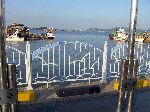
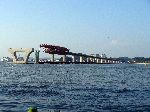 Gunsan
is set on the banks of the Geumgang (river). With that it is not a surprise that
the fencing along the dock is specially designed incorporating gulls. With
not much more patients I could have gotten a picture of the railing with said
bird providing a fly-by. After a couple of missed fly-bys I moved on.
Gunsan
is set on the banks of the Geumgang (river). With that it is not a surprise that
the fencing along the dock is specially designed incorporating gulls. With
not much more patients I could have gotten a picture of the railing with said
bird providing a fly-by. After a couple of missed fly-bys I moved on.One meaning of Geum is gold, but so far I haven't found a reference that connects the two.
It also wasn't a surprise that there was a new bridge in the works to help people cross the river.
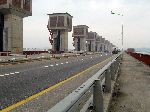
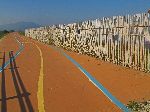
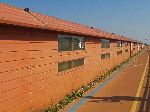 The area and
estuary are known for birds -- specifically migratory birds. They are celebrated
annually with the Gunsan International Migratory Bird Festival in November. To
help the birders, bird blinds and observations building have been constructed
along the trail.
The area and
estuary are known for birds -- specifically migratory birds. They are celebrated
annually with the Gunsan International Migratory Bird Festival in November. To
help the birders, bird blinds and observations building have been constructed
along the trail.
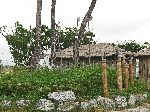
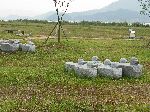
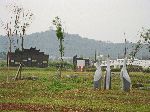 This
reach of the river has the Hwayang Wetland, Sinseong-ri reeds and
Napo Sipjattuel Migratory Bird Observatory, so it is not surprising that the theme at
one of the rest
area is birds and ducks. It is festooned with a variety of avian inspired art.
This
reach of the river has the Hwayang Wetland, Sinseong-ri reeds and
Napo Sipjattuel Migratory Bird Observatory, so it is not surprising that the theme at
one of the rest
area is birds and ducks. It is festooned with a variety of avian inspired art.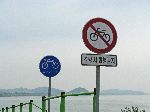
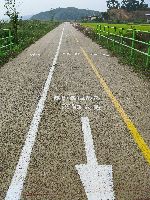 The
prudent advice on the signs says "Passage during freezing prohibited."
The
prudent advice on the signs says "Passage during freezing prohibited."The photo to the right shows some trail markings on the Geumgang Bicycle Path. The graphics identity a pedestrian lane and bike lanes for each directions. Text alerts users to an upcoming bridge and road.
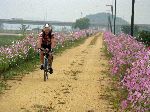
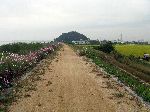
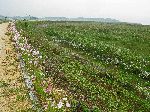
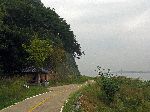
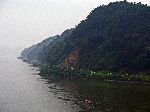
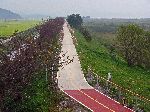
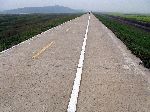
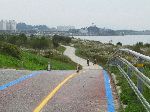
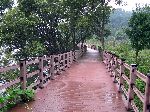 The
path on the south bank is asphalt and cement.
The
path on the south bank is asphalt and cement.
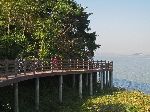
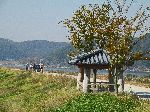
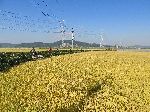
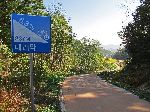
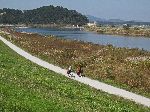
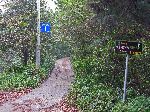
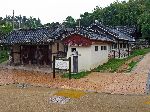 After
bicycling along the river for a while route diversions away from the river are a
welcome relief and often bring you back in touch with the culture and people.
After
bicycling along the river for a while route diversions away from the river are a
welcome relief and often bring you back in touch with the culture and people. Jungnim Seowon (right), was named ‘Hwangsanseowon’ when it was built, but later its name was changed to Jungnim Seowon. It was abandoned in 1871 by the Seowoncheolpyeryeong (a royal order abolishing seowons) and then restored in 1965.

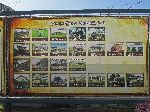
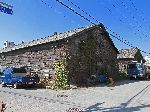 Leaving the trail completely and ducking into the town of Ganggyeong is like stepping
halfway back to the 1930s. It offers a bit of the old and a bit of the new,
though the pace of change seems to be accelerating. There is a billboard in town
with pictures of older buildings. They are getting harder and harder to
find. The building to the right is posted but it is all but ready to collapse
from it own weight.
Leaving the trail completely and ducking into the town of Ganggyeong is like stepping
halfway back to the 1930s. It offers a bit of the old and a bit of the new,
though the pace of change seems to be accelerating. There is a billboard in town
with pictures of older buildings. They are getting harder and harder to
find. The building to the right is posted but it is all but ready to collapse
from it own weight.
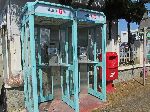
In this digital, wireless county, telephone booths are rare.
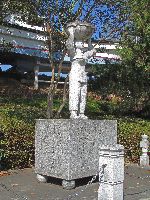 The Japan traders began coming to Ganggyeong in 1899, when a Japanese merchant opened up a
seafood wholesale business there. In 1905, a Japanese elementary school opened
up. In 1902, the town became the first in province to get a post office.
The Japanese built a courthouse, town office, commercial high school and other public
buildings. The town got electricity and a water supply-sewage system in the 1920s, as well as the first theater in the Honam region.
The Japan traders began coming to Ganggyeong in 1899, when a Japanese merchant opened up a
seafood wholesale business there. In 1905, a Japanese elementary school opened
up. In 1902, the town became the first in province to get a post office.
The Japanese built a courthouse, town office, commercial high school and other public
buildings. The town got electricity and a water supply-sewage system in the 1920s, as well as the first theater in the Honam region.
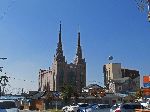
Modern Korean national development would not be kind to the city, however. The opening of the Seoul-Busan railroad, in 1906, diminished the roll the Gongju-Cheongju area in the towns trade activity. The opening of the Gunsan and Seoul-Mokpo lines, to the west, put another nail in the town’s coffin—seafood from Gunsan and agricultural goods from the surrounding areas now bypassed Ganggyeong’s markets. Nevertheless, the city retained its importance as a market through the 1930s. The next blow came with the Korean War, when much of the city’s market facilities were destroyed.
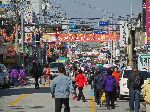
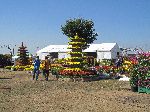 But it may be too soon to write off Ganggyeong. Market days fill the
streets and they seem to have found a new niche. Now the town is a small regional market specializing in jeosgal, or salted
/ femented
seafood. There must be a dozen large jeosgal stores in town (below) --
they seemed to be selling marinated meat as well. Because there are so many here
and so few in other towns it is a phenomena. As one might expect Ganggyeong
hosts an annual Fermented Fish Festival.
But it may be too soon to write off Ganggyeong. Market days fill the
streets and they seem to have found a new niche. Now the town is a small regional market specializing in jeosgal, or salted
/ femented
seafood. There must be a dozen large jeosgal stores in town (below) --
they seemed to be selling marinated meat as well. Because there are so many here
and so few in other towns it is a phenomena. As one might expect Ganggyeong
hosts an annual Fermented Fish Festival.
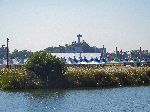 The
stores are distinctive from convenience stores and supermarkets for there very
conforming displays of rows of deep covered vats of food items, with little else
in the way of associated items and accessories. The stores are bright and
clean, and look prosperous, but there weren't a lot of customers during our
visits.
The
stores are distinctive from convenience stores and supermarkets for there very
conforming displays of rows of deep covered vats of food items, with little else
in the way of associated items and accessories. The stores are bright and
clean, and look prosperous, but there weren't a lot of customers during our
visits.
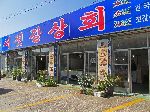
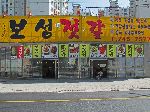
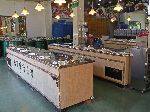
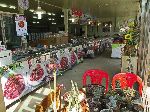
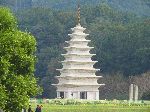
According to the Samguk yusa (Memorabilia of the Three Kingdoms), Seodong (King Mu's childhood name) and his queen saw a vision of the Maitreya Buddha triad emerging from a pond at the foot of Yonghwasan (mountain). At the request of the queen, the pond was drained and Mireuksa was established, in 602. According to a gold plate found inside the Stone Pagoda of Mireuksa, the establishment of Mireuksa was from the urging of the daughter of the queen, in 639AD.
The temple expanded during the Unified Silla period and is believed to have continued to operate as a temple until around 1600, the mid-Joseon period.
The layout of the temple was unique with three temple units in a row, each having one pagoda and one main prayer hall. The temples represent Maitreya, the Buddha of the future, who attained enlightenment and preached the Buddhist teachings three times under the bodhi tree to save sattva (living beings).
In addition to its unique layout, Mireuksa is noted for the quality of its nine-story stone pagoda (the oldest in Korea, one of two stone pagodas remaining from the period, and the largest of these), the structure of the platform of the main halls, the shape of the stone lanterns, and the craftsmanship of the sarira reliquary. This advanced cultural achievement carried on in its influence on the formation of the culture of Silla and Japan.
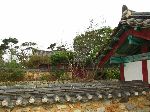 North
to Mireuksa is the Yonan Yi Clan's archives. Most of the records and other
document are about Yi Sung-won (1428-91), a high official during the reign of
King Seongjong (including justice and defense minister), his grandfather Yi
Paek-kyom, his father Yi Po-chong, his grandson Yi Kye-ryun and some clan
affairs.
North
to Mireuksa is the Yonan Yi Clan's archives. Most of the records and other
document are about Yi Sung-won (1428-91), a high official during the reign of
King Seongjong (including justice and defense minister), his grandfather Yi
Paek-kyom, his father Yi Po-chong, his grandson Yi Kye-ryun and some clan
affairs.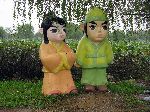
Mascots of Buyeo
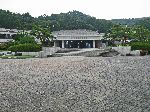
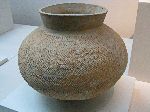 Buyeo
National Museum celebrates the Mahan and Baekje Kingdoms. During the period when
Sabi was the capital Baekje culture experience its final flourish. The Museum
has a collection of about 15,000 artifacts from the Chungnam Province.
About 1,000 pieces are on permanent display for public viewing.
Buyeo
National Museum celebrates the Mahan and Baekje Kingdoms. During the period when
Sabi was the capital Baekje culture experience its final flourish. The Museum
has a collection of about 15,000 artifacts from the Chungnam Province.
About 1,000 pieces are on permanent display for public viewing.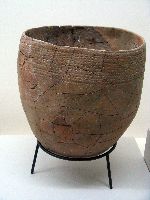
The Mahan Kingdom existed from the 3rd century BC until the 4th
century AD. In Hahan, the “pottery with clay stripes” culture was
introduced in about the 3rd century BC. Its development brought
considerable changes to the local community. In the early 2nd century
BC, the iron culture of the Han Dynasty, of China, spread to Mahan, laying the
basis for the formation of 54 mini kingdoms in Mahan through a comprehensive
reorganization of the local society. Iron weapons and farming tools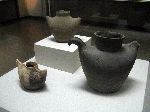 developed at that time included ring-pommel swords, double-blade swords,
spears, arrowheads, sickles, chisels, axes and hand blades.
developed at that time included ring-pommel swords, double-blade swords,
spears, arrowheads, sickles, chisels, axes and hand blades.
Mahan bird-shape pottery is assumed to have been used in various rites. It is usually found along the west coast and the lower reaches of the Geumgang. Birds were believed to be the vehicles that linked people with heaven and earth. Thus, the bird-shape objects are assumed to have been used in rites in which prayers for the fulfillment of their wishes were made.
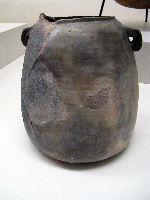
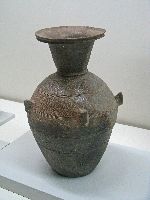
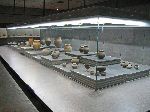
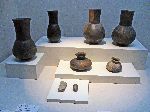 Baekje
was the first culture to produce glazed pottery by applying glaze to
earthenware. This epochal technical breakthrough effectively ended the
preexisting earthenware culture that dominated the Korean Peninsula for
thousands of years and inaugurated a new age for ceramics. A black color was
produced by rubbed an item with a paste of dark minerals, such as black lead or
manganese, before being fired. This style of vessel often features a long-necked
jar with a round body.
Baekje
was the first culture to produce glazed pottery by applying glaze to
earthenware. This epochal technical breakthrough effectively ended the
preexisting earthenware culture that dominated the Korean Peninsula for
thousands of years and inaugurated a new age for ceramics. A black color was
produced by rubbed an item with a paste of dark minerals, such as black lead or
manganese, before being fired. This style of vessel often features a long-necked
jar with a round body.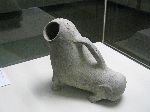
A hoya was a chamber pot used exclusively by males. It was shaped like a tiger with its front legs set upright, its hind legs resting on the ground, its face turned left and its mouth agape. It is supposed to have been modeled on those made in the Southern Dynasties of China.
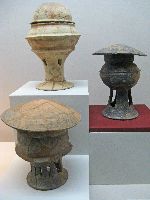
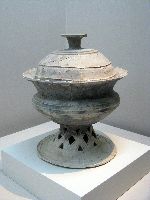 The
Baekje produced a variety of other pottery with creative elements:
The
Baekje produced a variety of other pottery with creative elements:
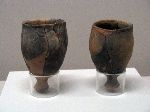
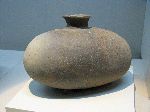
Pottery and pottery stands (left)
Oblong pots (right)
Cups (far right)
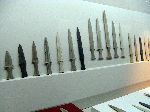
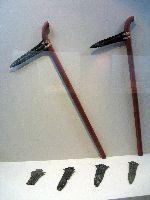 A
Bronze Dagger Culture, unique to the Korean Peninsula, emerged in about the 4th
century BC as a combination and extension of the Liaoning-style Bronze Dagger
Culture and the bronze culture of more northern countries. The Liaoning bronze
dagger culture first appeared in the Liaoning area of north-eastern China in
the beginning of the 10th century BC. Liaoning bronzes contain a higher
percentage of zinc than those of the neighboring bronze cultures. Asian scholar Lee Chung-kyu
has concluded that the culture is properly divided into five phases: Phases I and II
typified by violin-shaped daggers, Phases IV and V by slender daggers, and Phase
III by the transition between the two. Of these, remains from Phases I, II and
III can be found in some amounts in both the Korean peninsula and northeast
China, but remains from Phases IV and V are found almost exclusively in Korea
A
Bronze Dagger Culture, unique to the Korean Peninsula, emerged in about the 4th
century BC as a combination and extension of the Liaoning-style Bronze Dagger
Culture and the bronze culture of more northern countries. The Liaoning bronze
dagger culture first appeared in the Liaoning area of north-eastern China in
the beginning of the 10th century BC. Liaoning bronzes contain a higher
percentage of zinc than those of the neighboring bronze cultures. Asian scholar Lee Chung-kyu
has concluded that the culture is properly divided into five phases: Phases I and II
typified by violin-shaped daggers, Phases IV and V by slender daggers, and Phase
III by the transition between the two. Of these, remains from Phases I, II and
III can be found in some amounts in both the Korean peninsula and northeast
China, but remains from Phases IV and V are found almost exclusively in Korea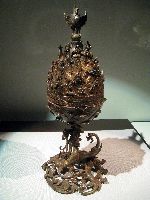
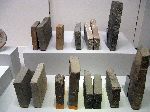 bird. Few Asian works compare with it in terms of design and
expressiveness.
bird. Few Asian works compare with it in terms of design and
expressiveness.During the Baekje Dynasty, lotus-flower patterns were particularly popular for many types of artistic works. In addition to the lotus incorporated into the incense burner, exquisite lotus flower patterns, characterized by smooth curves and large size were often carved on tiles or bricks
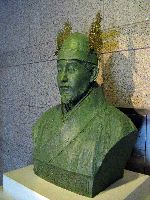
According to the Baekje Bongi (Chapter of Royal biographies of Baekje) in Samguk Sagi (The History of the Three Kingdoms), Baekje “kings wore a headwear made of black silk and decorated with gold flowers while the officials in ranks of over the sixth grade Nasol were ornamented with silver flowers.” Now widely represented by silver ornaments, the new court uniform system spread to provincial administrations according to the development of the system of administrative divisions of provinces (hang), counties (gun), towns (seong).
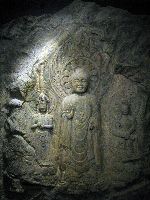
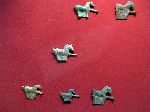
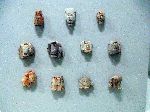
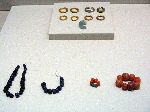
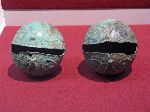
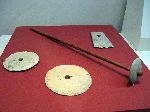
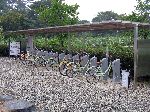
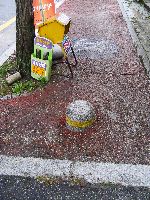 A
great way to survey all of the historic and cultural sites in Buyeo is by
bicycle. If you didn't arrive with you own bike you can rent one from the Buyeo bicycle share program.
A
great way to survey all of the historic and cultural sites in Buyeo is by
bicycle. If you didn't arrive with you own bike you can rent one from the Buyeo bicycle share program.Generally it is pretty easy to get around because average traffic volumes are low. For the few busy streets there are often parallel routes through the adjacent neighborhoods. Where bicycle facilities have been provided they are often dubious. The photo to the right shows the bicycle logo stenciled and the path being narrowed about 40% by a tree and newspaper box and this is near a low profile bollard strategically place to grab a pedal at the intersection.
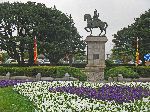
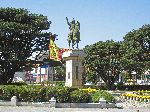 In
660, Baekje was invaded by a force of 50,000 from Silla, supported by 144,000
Tang (Chinese) soldiers. General Gyebaek, with only 5,000 troops under his command, met
them in the battlefield of Hwangsanbeol. Before departing to the battlefield,
Gyebaek reportedly killed his wife and children to boost the fallen morale and
patriotism of his army, and to prevent the thought of them influencing his
actions or to cause him to falter in battle.
In
660, Baekje was invaded by a force of 50,000 from Silla, supported by 144,000
Tang (Chinese) soldiers. General Gyebaek, with only 5,000 troops under his command, met
them in the battlefield of Hwangsanbeol. Before departing to the battlefield,
Gyebaek reportedly killed his wife and children to boost the fallen morale and
patriotism of his army, and to prevent the thought of them influencing his
actions or to cause him to falter in battle.His forces won four initial battles, causing severe casualties to Silla forces. However, in the end, exhausted and surrounded, Gyebaek's army would be outnumbered and overwhelmed. Baekje's forces would all be annihilated in battle, alongside with their commander, General Gyebaek.
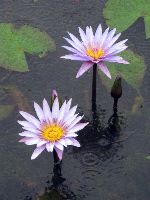
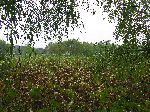 Seodong
Park / Gungnamji (pond) is the first recorded instance of Koreans constructing an artificial pond with
an island in the middle. It was dug during the reign of King Mu. In the
summer it is full of lotus blossom. Each section has a different color. The
ponds are surrounded by willow trees.
The name of the park comes from the legend “Seodong-yo” or "Seo Dong's Song."
The story goes…
Seodong
Park / Gungnamji (pond) is the first recorded instance of Koreans constructing an artificial pond with
an island in the middle. It was dug during the reign of King Mu. In the
summer it is full of lotus blossom. Each section has a different color. The
ponds are surrounded by willow trees.
The name of the park comes from the legend “Seodong-yo” or "Seo Dong's Song."
The story goes…
There was an ambitious young man called Jang. He was a talented person who had
the makings of a great leader but he made a living by selling horses (or
gathering yams) as a youth.
The commoners simply called him Seo Dong. After hearing about the remarkable
beauty of Princess Seon-hwa, who was the third daughter of King Jin-pyeong of
the Silla Kingdom, he shaves his hair to disguise himself as a Buddhist Monk and
slips into Silla. He befriends the children in the capital of Silla by giving
away horses (or yams) and teaches them a simple song, “The Ballard of Seo Dong.”.
Word of the scandalous song soon reaches the royal palace. The song implicated
the princess so she was banished from the Kingdom. Before leaving the queen gave the
princess a bar of gold. During the princess’s journey, Seo Dong appeared and
persuaded her to follow him. Though the princess had no idea who the man was or where
he was
from, she thought it would be nice to have a friend on her long trip and followed
him. The princess takes a liking to the man because he proves to be trustworthy
and they eventually got married. Later, she learns that his name is Seo Dong and
realizes how a simple song brought them together. He later became the 30th
King of Baekje and was called King Mu.
In 2005-06, the legend was turned into a television drama which was stretched out over 56 episodes.
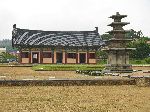
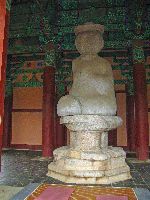 A stone statue of the seated Buddha was discovered at the
site of the lecture hall. It was made during the
Goryeo period, when the temple
was rebuilt. This suggests that the lecture hall, made during the Beakje
period, was used as a main hall during the Goryeo period. Only the pagoda,
Buddha and lotus ponds remain of the original complex.
A stone statue of the seated Buddha was discovered at the
site of the lecture hall. It was made during the
Goryeo period, when the temple
was rebuilt. This suggests that the lecture hall, made during the Beakje
period, was used as a main hall during the Goryeo period. Only the pagoda,
Buddha and lotus ponds remain of the original complex.Only the pedestal and the body of the Buddha remain because the original sitting stone Buddha was burned and heavily damaged. Judging from the narrow shoulders and the hands placed around the chest this seems to be Vairocana. Its head and hat were restored at a later time. The pedestal has been fairly well preserved and shows refined and balanced craftsmanship.
The Baekje people chose stone pagoda to make up for the weak points of wood construction. The five-story pagoda is an example of the refined Baekje stone architecture. Though the pagoda is patterned after its wooden cousins, it displays a refined and creative form instead of being a simple imitation.
Each pedestal is fixed by a pillar stone. Each corner of the pagoda body in each story holds a pillar stone using the beheullim technique, where a pillar's upper and lower extremities are narrow while its middle is wider. Thin and wide roof stones covering the edges of the eaves display what is described as "lofty elegance."
After Su Tin-fang, a Tang General, destroyed the Baekje Kingdom, he inscribed his exploits on the surface of the first-story body of the Pagoda. This inscription is regarded as very valuable historic information because it records the circumstances of the day.
The Jeongnim Pagoda is one of the two remaining stone pagodas from the Baekje period. (The other is at Mireuksa Temple site, in Iksan, and is considered a finer structure.)
In addition to the archeological layer of Buddhist temple, investigations have identified multiple older cultural layers; including Bronze Age layer containing plain-coarse pottery shards, a Baekje layer prior to the temple and a Goryeo layer.
The Jeongnim Temple site is now registered as a National Treasure.
The adjacent site museum has good exhibits on; the advancement of Buddhism across Asia, the development of Baekje Buddhism, the design of temples, aesthetics of Baekje temples, and Jeongnimsaji.
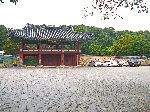
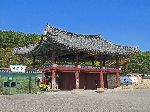 It is believed that Busosanseong (mountain fortress),
with Sabi, the capital of Baekje, in the center, was built in 538. The
Baengmagang (river) forms a natural protective barrier on the north side. In the
mountain fortress there are many historic sites: Gunchangji – the military depot
that stored food, four gates in the east, west, south and north directions,
Yeongilru Pavilion on which the kings of Baekje and nobilities came to make
annual plans while watching the sun rise, Sajaru Pavilion that was built on
Songwoldae, the site to watch the moon submerging in the Baengmagang as winding
up the national affairs, Suhyeolbyeongyeongji – a resting hut for Baekje
military, Banwolru Pavilion considered as a lookout point, Nakhwaam where many
Baekje women died for the fidelity as the Baekje kingdom collapsed, Goransa that
was famous for Goran plant and Goran mineral water and built for cherishing the
spirits of Baekje women in the Goryeo dynasty, Samchungsa that enshrined the
portaits and altars of three Baekje loyal subjects, Seongchung, Heungsu and
Gyebaek, and Seoboksaji Temple site, the temple of the Baekje era on the west
side of the hill.
It is believed that Busosanseong (mountain fortress),
with Sabi, the capital of Baekje, in the center, was built in 538. The
Baengmagang (river) forms a natural protective barrier on the north side. In the
mountain fortress there are many historic sites: Gunchangji – the military depot
that stored food, four gates in the east, west, south and north directions,
Yeongilru Pavilion on which the kings of Baekje and nobilities came to make
annual plans while watching the sun rise, Sajaru Pavilion that was built on
Songwoldae, the site to watch the moon submerging in the Baengmagang as winding
up the national affairs, Suhyeolbyeongyeongji – a resting hut for Baekje
military, Banwolru Pavilion considered as a lookout point, Nakhwaam where many
Baekje women died for the fidelity as the Baekje kingdom collapsed, Goransa that
was famous for Goran plant and Goran mineral water and built for cherishing the
spirits of Baekje women in the Goryeo dynasty, Samchungsa that enshrined the
portaits and altars of three Baekje loyal subjects, Seongchung, Heungsu and
Gyebaek, and Seoboksaji Temple site, the temple of the Baekje era on the west
side of the hill.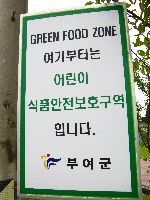
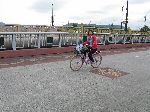 If
the sign wasn't bilingual I would have ignored it, but having peaked my curiosity
I took a picture.
I believe the translation is "Beyond this Point, Children, Food Safety Zone,
Thank you."
If
the sign wasn't bilingual I would have ignored it, but having peaked my curiosity
I took a picture.
I believe the translation is "Beyond this Point, Children, Food Safety Zone,
Thank you."On the topic of healthy living, we passed this local bicyclist -- always good to see.
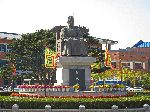
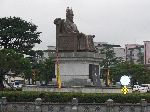 Seongwang
(King Seong)
(r. 523–554) was the 26th king of Baekje. He was a son of Muryeong of Baekje
and is best known for making Buddhism the state religion, moving the national
capital to Sabi (present-day Buyeo), and reclaiming the center of the Korean
Peninsula. His demise eventually came at the hands of an ally who betrayed him.
The name Seong translates as 'The Holy.'
Seongwang
(King Seong)
(r. 523–554) was the 26th king of Baekje. He was a son of Muryeong of Baekje
and is best known for making Buddhism the state religion, moving the national
capital to Sabi (present-day Buyeo), and reclaiming the center of the Korean
Peninsula. His demise eventually came at the hands of an ally who betrayed him.
The name Seong translates as 'The Holy.'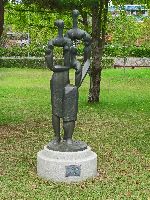
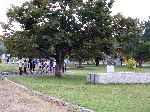
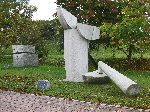
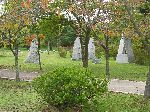
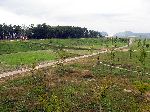
Gudeurae Sculpture Park is adjacent to the river. It contains 59 sculptures: Thirty of the works of art were crafted by sculptors residing in Gudeurae who are known for skills that have been handed down from artists dating back to the Baekje Period. The other 29 pieces are from Korean and overseas artists who participated in the International Modern Sculpture Symposium in 1999.
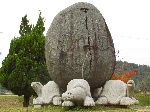
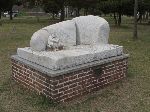
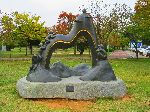
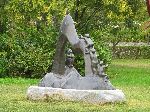
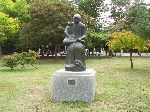

 Please
contact us if you would like to be added to
Ibike's mailing list or have questions, comments, corrections or criticism. (Also, please let us know how you learned about us and
found this site.) Privacy policy.
Please
contact us if you would like to be added to
Ibike's mailing list or have questions, comments, corrections or criticism. (Also, please let us know how you learned about us and
found this site.) Privacy policy.
![]() IBF Homepage
IBF Homepage ![]() Ibike Programs
Ibike Programs
![]() Ibike Schedule
Ibike Schedule
![]() Search
Search
